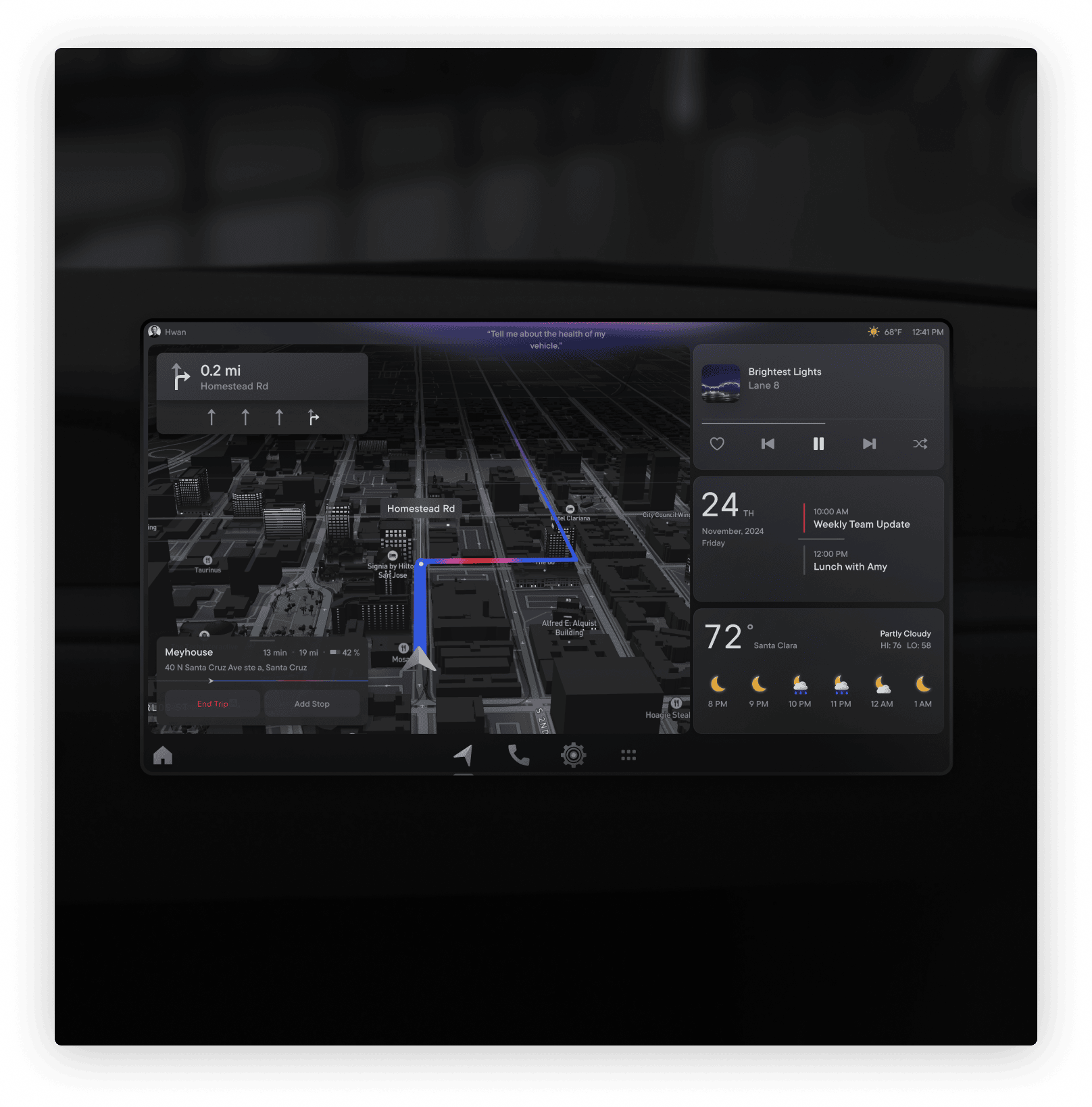Vehicle OS
Applied Intuition’s offerings

On-board platform

Off-board platform

Workbench

Hardware






A high-performance software platform with clear APIs covering the entire vehicle enables automakers to create new consumer experiences.
An iterative model and hardware design help automakers develop software continuously, deploy it to vehicles, and deliver high-quality updates in a matter of days rather than months.
Vehicle OS uses the latest AI technology, allowing automakers to build AI applications and create a data engine to train ML models on fleet data.
Modern vehicle software platforms typically consist of an operating system and middleware to manage hardware and software resources, APIs for application development, services for connectivity, security, and user interface management, and consumer experiences such as navigation, infotainment, and voice assistant.
Modern vehicles are also built based on a centralized hardware architecture consisting of compute units running infotainment, ADAS and AD software, and zonal controllers to manage all the control units and endpoints (sensors and actuators) in the vehicle.
Cloud-based tools streamline development and maintenance by providing scalable resources for testing, deployment, and updates, facilitating collaboration across geographies, and enabling data analytics for continuous improvement.
AI enhances vehicle software platforms by improving user experiences through personalized settings, optimizing vehicle performance and energy efficiency, and enabling advanced features like predictive maintenance and autonomous driving capabilities.
Cloud integration is crucial for the continuous improvement and maintenance of vehicle software. It allows for secure over-the-air software updates and patches, ensuring that ADAS and AD systems are always equipped with the latest algorithms and safety features. Additionally, cloud integration supports the management of data logs and performance metrics, enabling remote diagnostics and optimizations that enhance system reliability and efficiency.